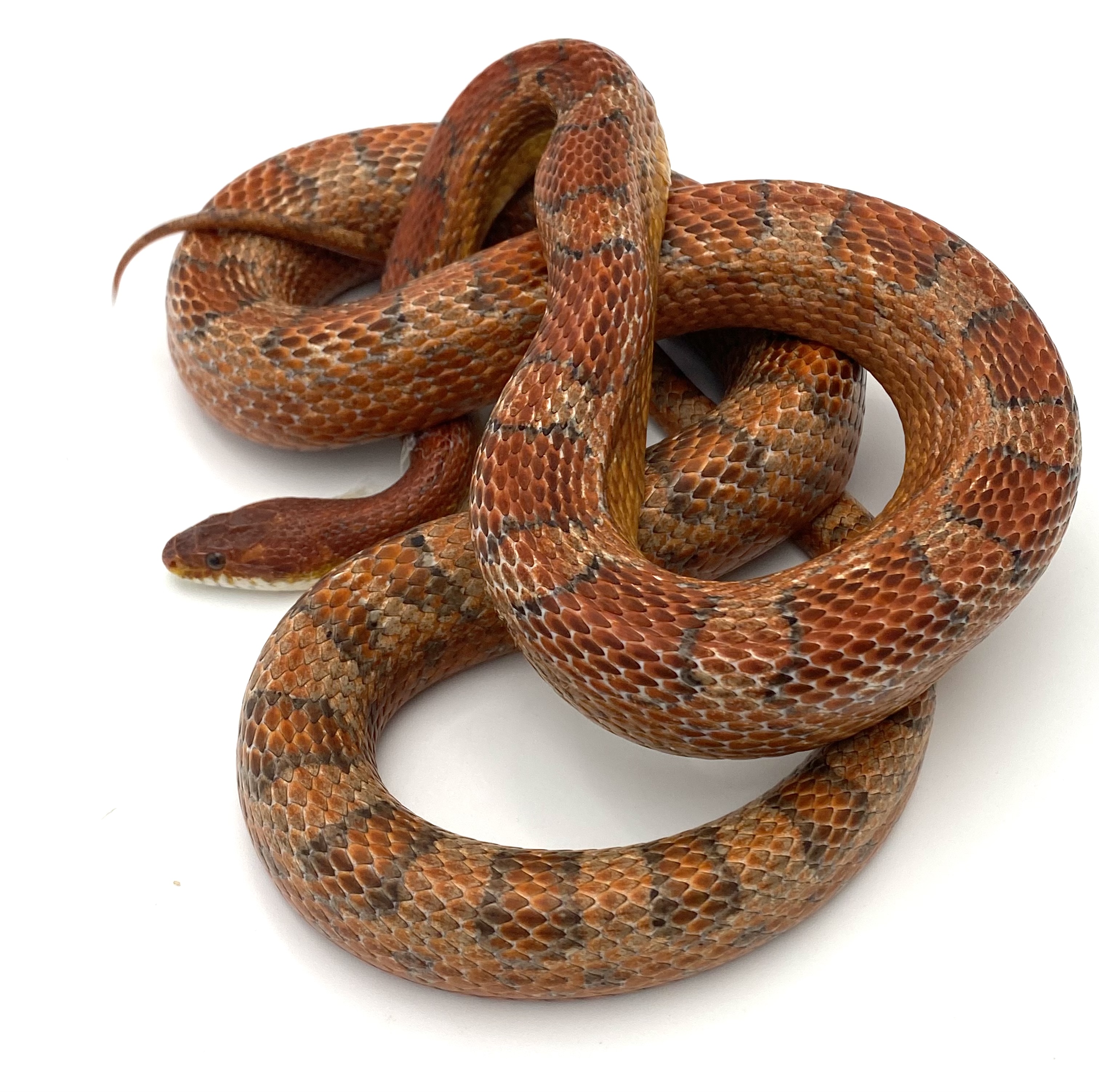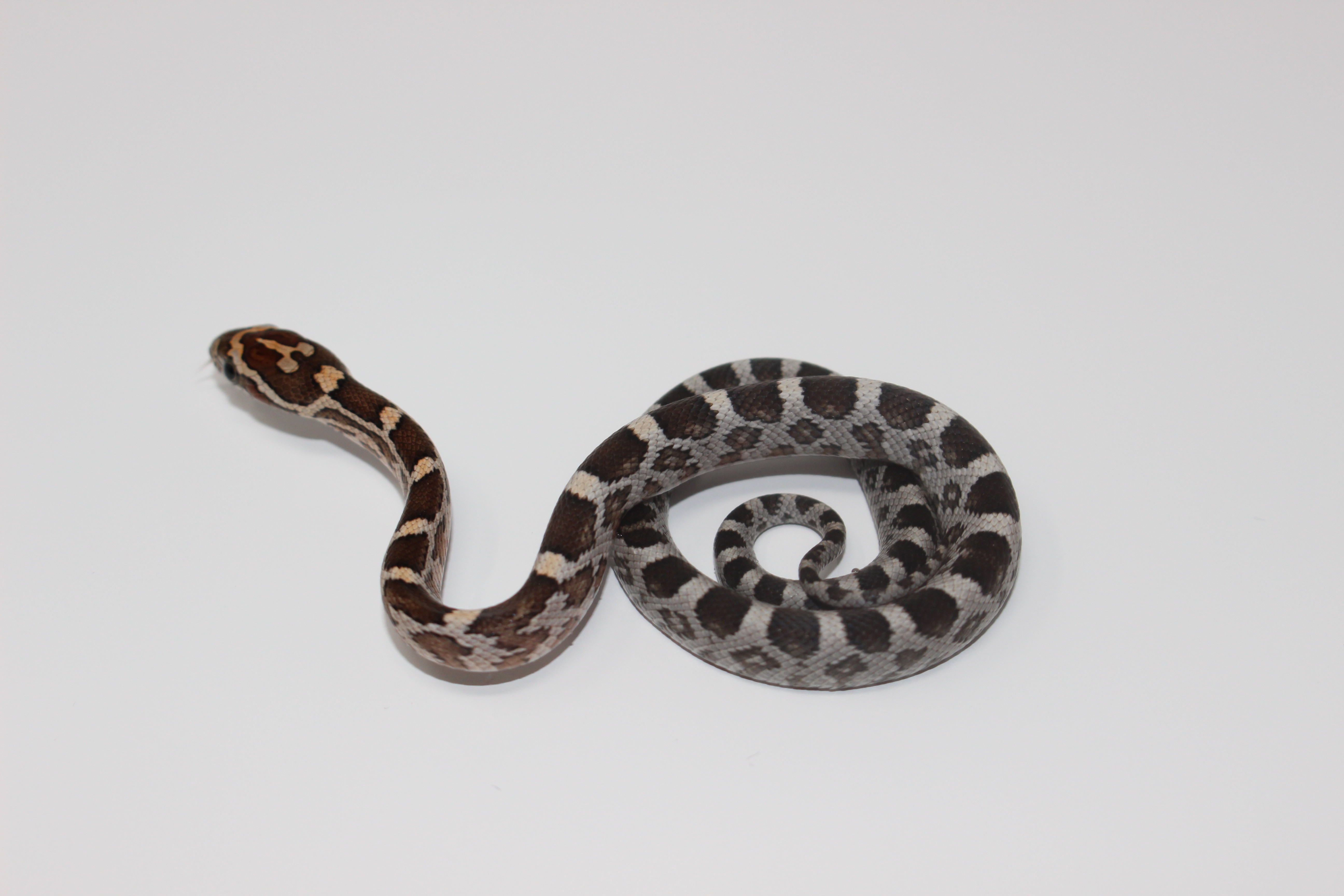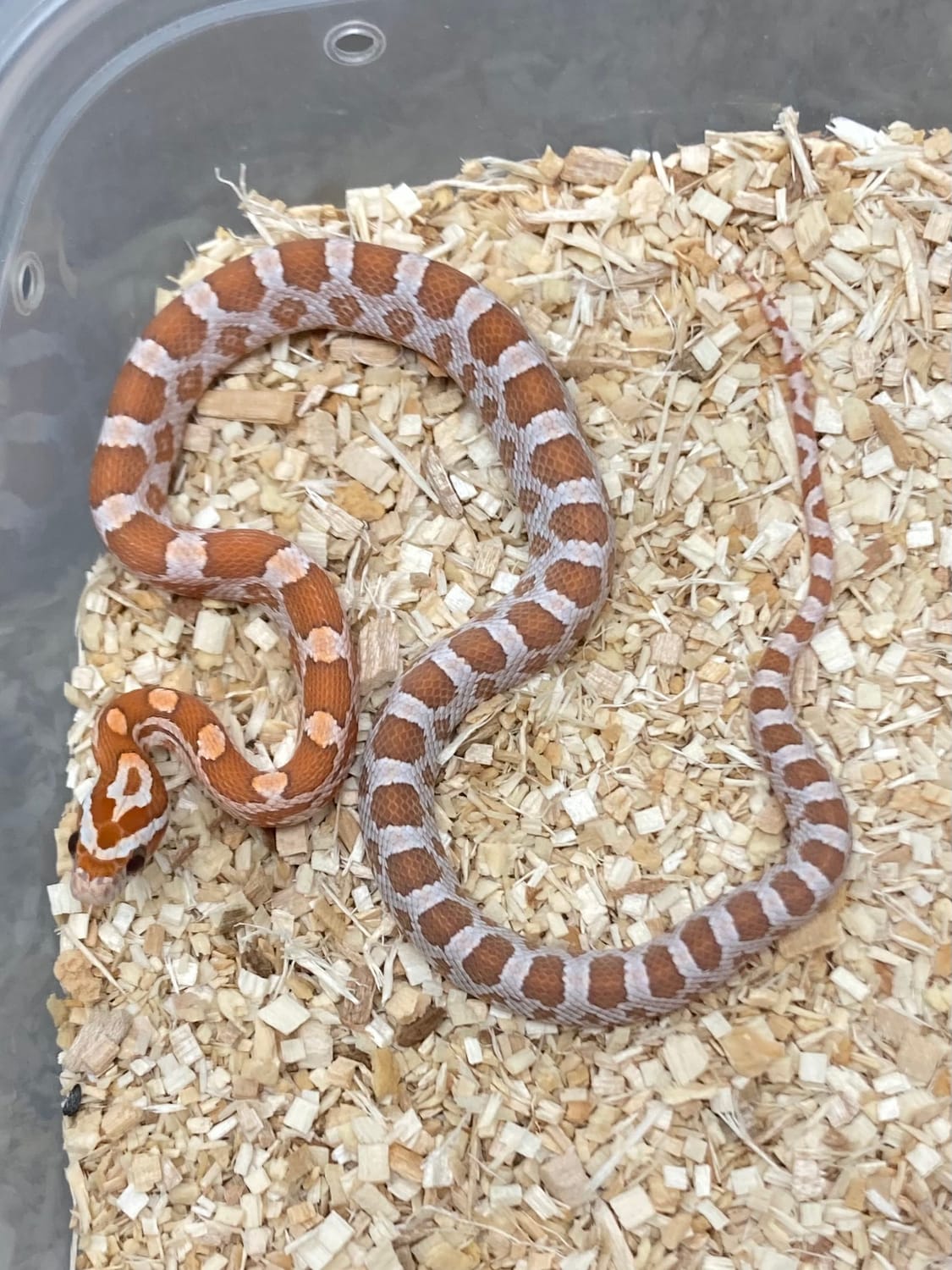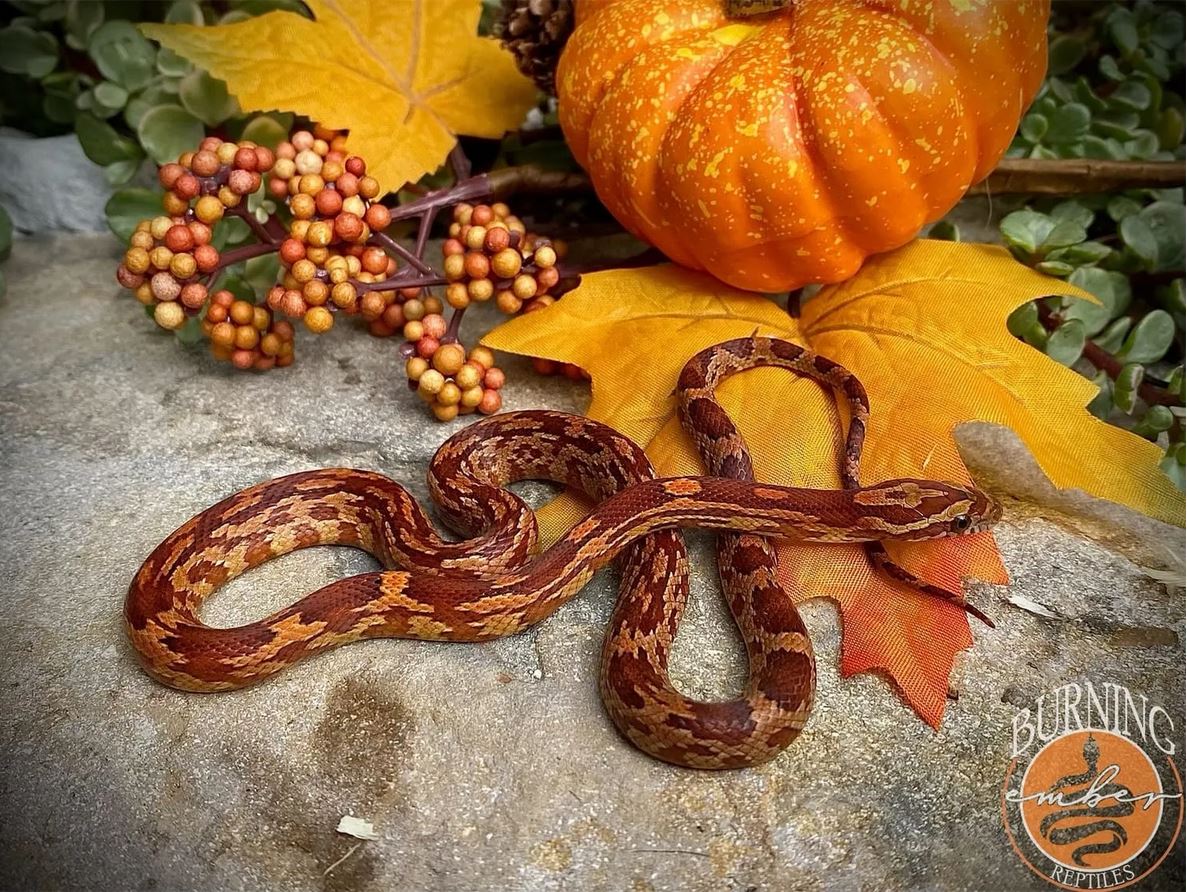Kastanie
Type: Recessive
First Produced By: Frank Schaub
Aliases: Chestnut, Copper, Java
Issues: N/A
First Produced In: Unknown
Availability: Lower
Last Updated: 2021-12-20
Do you have any suggestions or corrections for this article?
Click here to contribute feedback
About
Kastanie is a recessive mutation.
History
German for “chestnut”, Kastanie (pronounced kas’taːni̯ə) was first discovered by Frank Schaub from wild caught corn snakes he purchased from a Florida reptile dealer. Don Soderberg was also working with a morph called Rosy Blood around the same time, and with breeding trials, it was discovered that Rosy Bloods were the same as Kastanie Bloodreds.
Appearance
Head
The head of a Kastanie corn snake will be a deeper color than the body, usually a deep red or reddish orange. The eyes will have a black pupil and the irises will typically match the saddle color, either brown, dark orange, or dark red.
Body
The deep, rich color on the head and neck slowly fade out towards the tail. Colors on the body may be red, orange, brown, or sometimes even slightly peachy. White flecking may be present at maturity; most commonly seen in Mandarins (Amel Kastanies). Typical corn snake saddles will be present, but the colors are usually low contrast and the whole snake may have a reddish wash, further muddying the normally crisp and distinct saddles of a normal corn.
Hatchlings look somewhat unremarkable, nearly like normals or aneries at hatching, and then slowly gaining some brown, orange, and peach tones at the head and neck.
Belly
Kastanies have typical checker placement. They may have orange or red bleeding into the checkers.
Tail
The tail will follow the same pattern and color as the body. The intensity of the red or orange will be greatly reduced by the time it reaches the tail.
Proven Lines
No known proven lines
Related Traits
No known related traits
Combos
- Mandarin (Amelanistic Kastanie)
- Persimmon (Kastanie Lava)
- Rosy Bloodred (Diffused Kastanie)
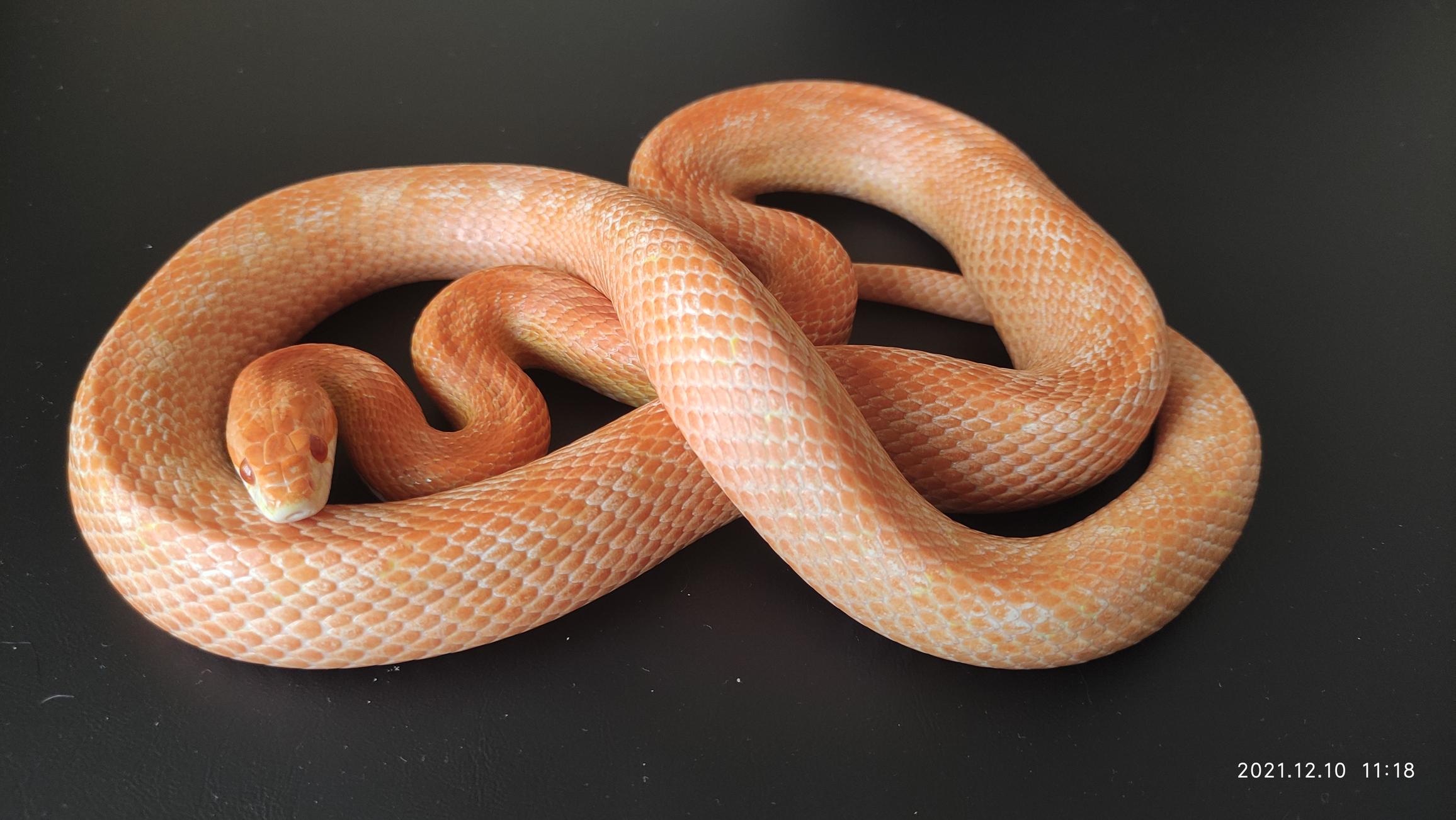
Mandarin Motley by Bryan Laubscher
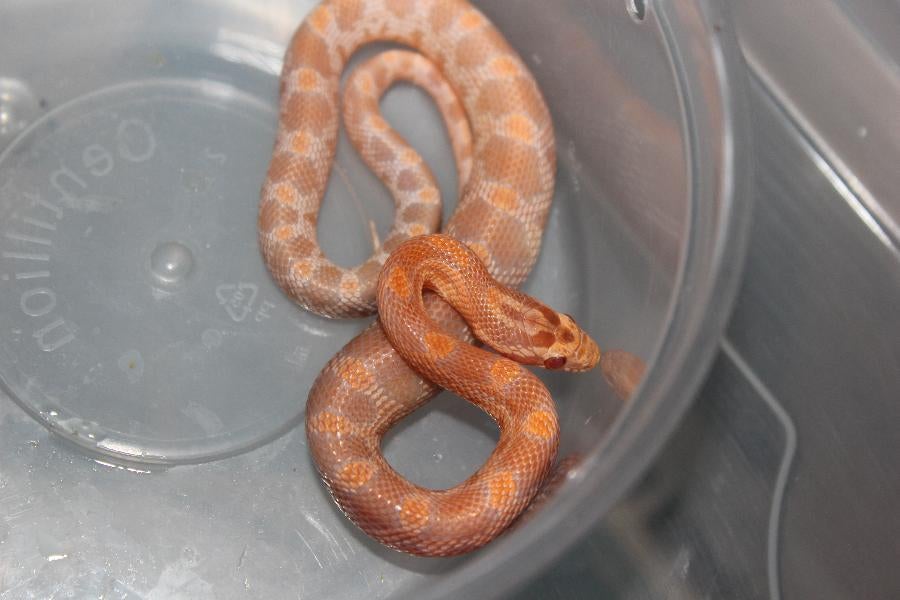
Mandarin by Bryan Laubscher
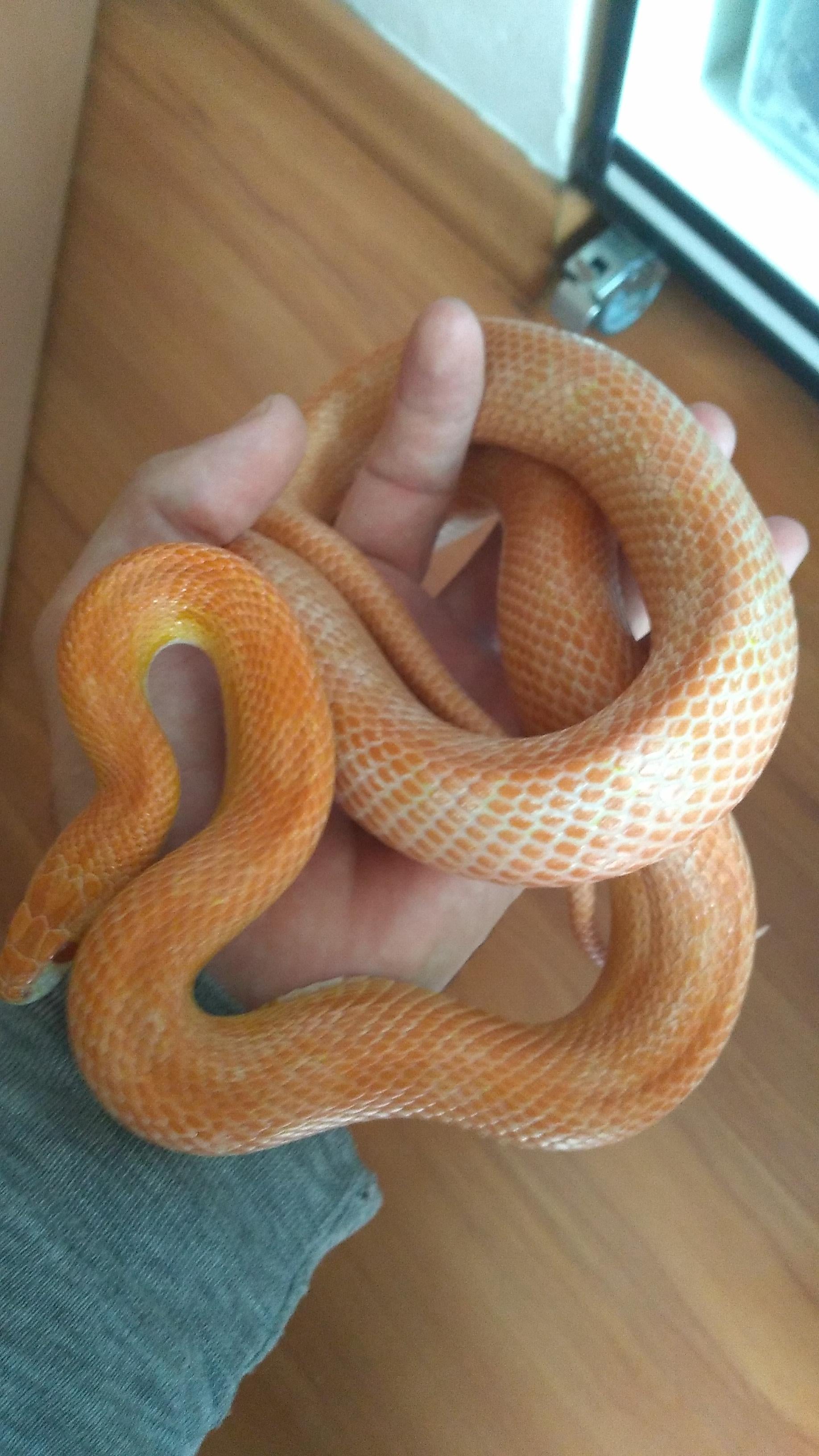
Mandarin Motley by Bryan Laubscher
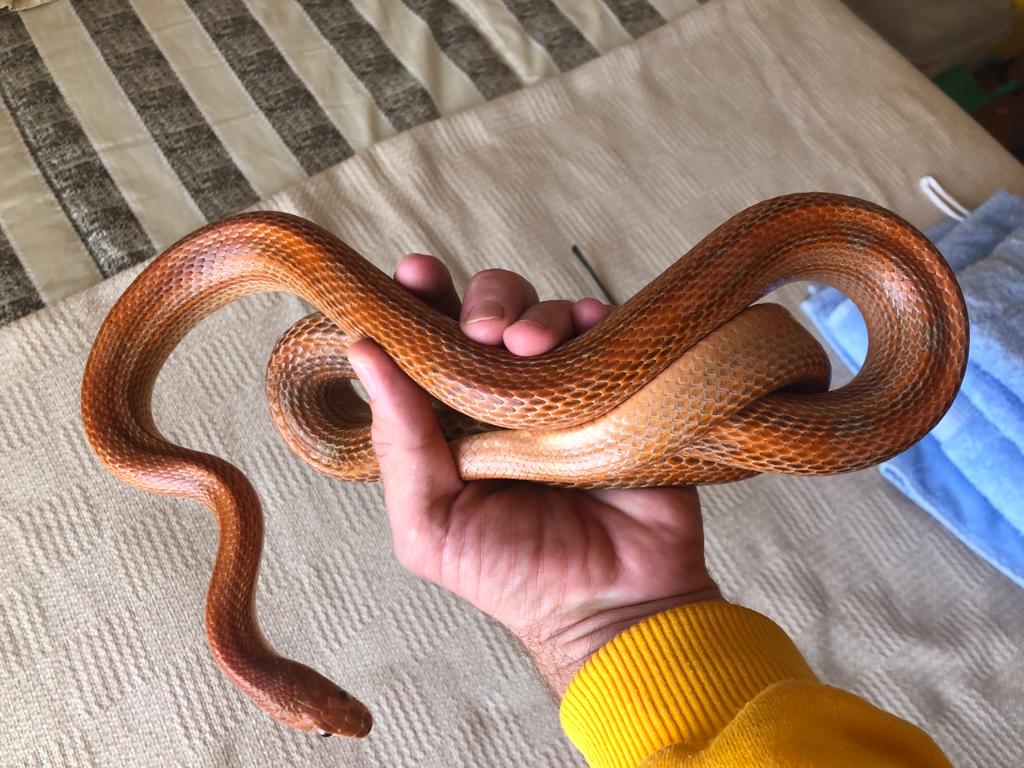
Hypo Kastanie Motley by Bryan Laubscher

Mandarin Motley by Bryan Laubscher

Kastanie Stripe by Bryan Laubscher
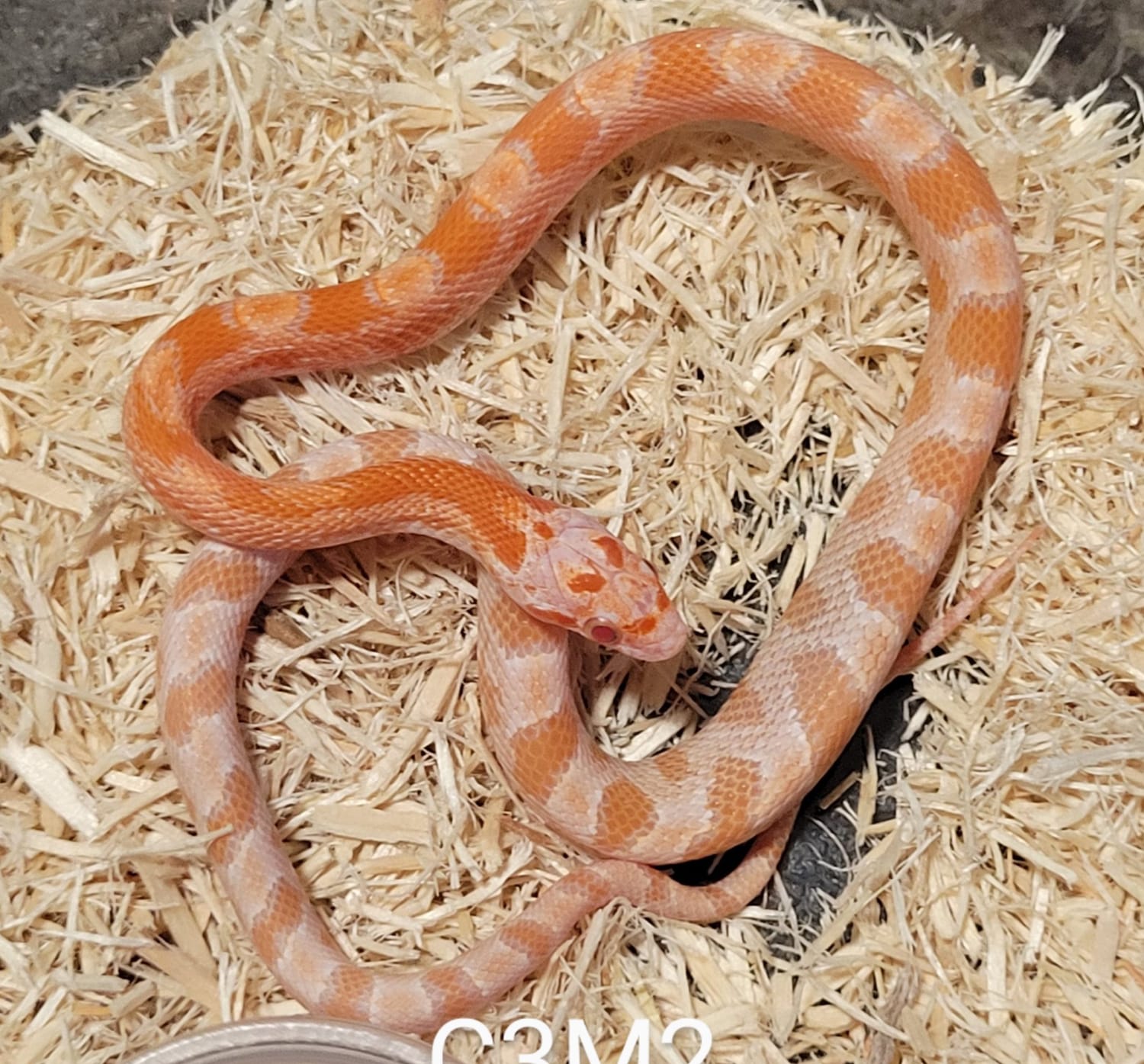
Mandarin Bloodred by Chris Nicholas Reptiles
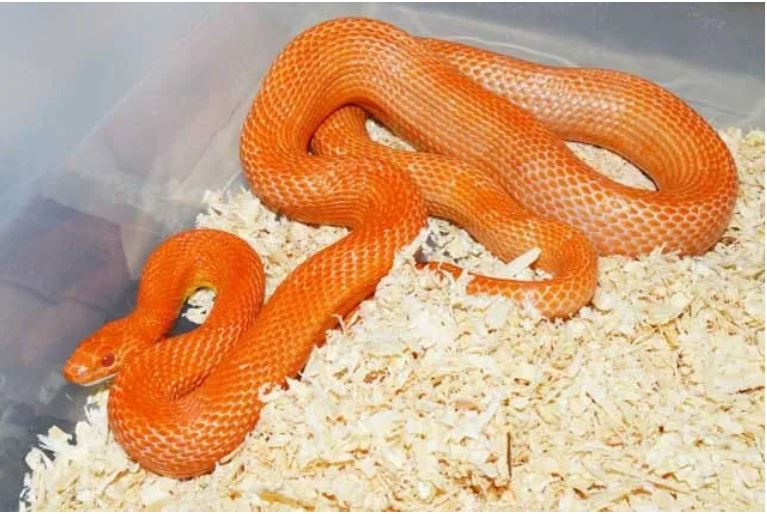
Mandarin Bloodred by VMS Professional Herpetoculture
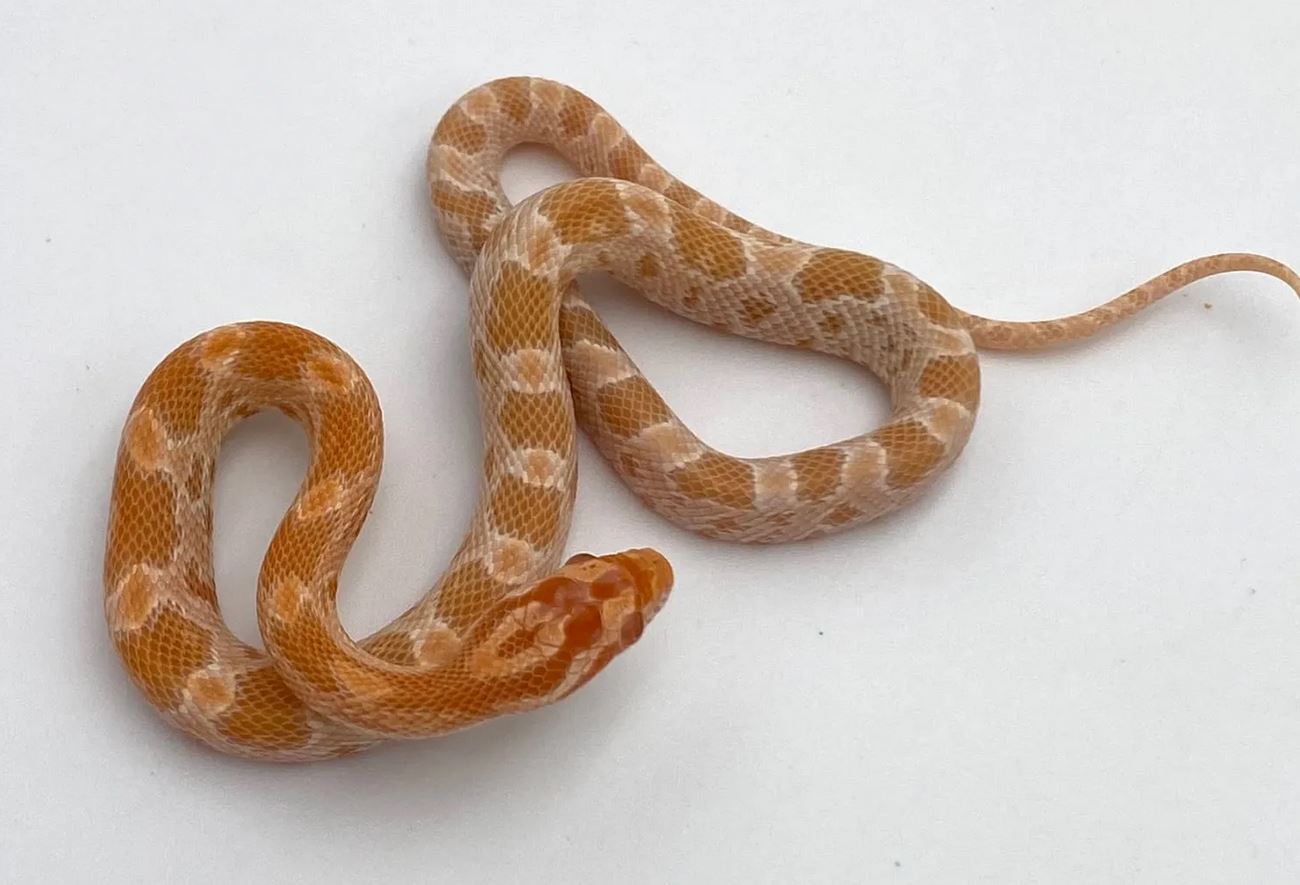
Mandarin by Travis Whisler Reptiles

Kastanie Bloodred by VMS Professional Herpetoculture
